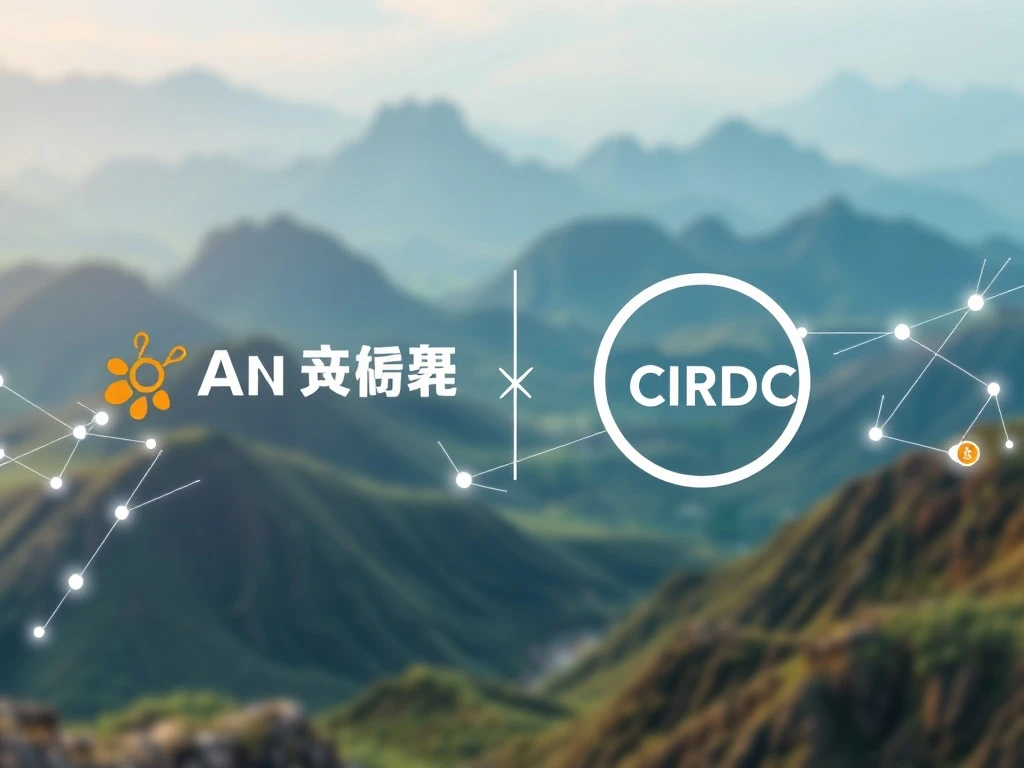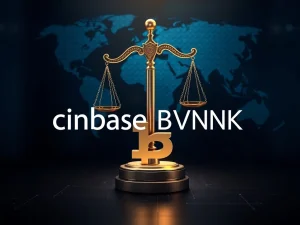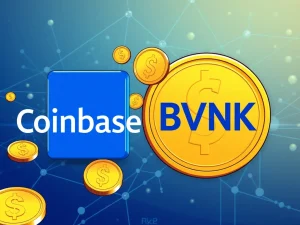Ant Group’s Pivotal Move: Integrating USDC Stablecoin on Its Blockchain

A significant development is on the horizon for the world of digital finance, one that could reshape how we perceive cross-border transactions and the utility of stablecoins. Reports suggest that Jack Ma-backed Ant Group, a titan in the fintech sector, is exploring a groundbreaking collaboration with Circle, the issuer of the USDC stablecoin. This potential integration of USDC onto Ant Group’s proprietary blockchain platform marks a pivotal moment, signaling a deepening convergence between established financial giants and the burgeoning cryptocurrency ecosystem.
Ant Group’s Vision: A Blockchain Future with USDC Stablecoin
Imagine a world where digital payments flow seamlessly across borders, powered by a stable, regulated digital currency. This vision appears to be at the core of Ant Group’s latest strategic move. The fintech affiliate of e-commerce behemoth Alibaba, known globally for its Alipay super-app, is reportedly working to incorporate the USDC stablecoin into its AntChain blockchain. This initiative is not just about adopting a stablecoin; it is about leveraging Ant Group’s immense reach, processing over $1 trillion in payments annually, to enhance its treasury, cross-border settlement, and tokenization services.
The reported plan hinges on a crucial condition: USDC achieving full regulatory compliance in the United States. While the timeline for this integration remains unspecified, the mere prospect highlights Ant Group’s commitment to exploring compliant and robust digital asset solutions. Their interest in stablecoins is not new; earlier this month, Ant Group collaborated with JD.com to advocate for Chinese yuan-based stablecoins with the People’s Bank of China (PBOC), underscoring a broader strategic push into this asset class.
Navigating the Landscape of Stablecoin Regulation
The path to widespread stablecoin adoption is intrinsically linked to clear and comprehensive regulation. Circle, the issuer of USDC, has been proactive on this front, recently applying to establish a national trust bank in the U.S. This proposed bank would oversee USDC reserves, aiming to provide a higher degree of transparency and security. Simultaneously, legislative efforts in the U.S. are gaining momentum. The US Senate’s passage of the GENIUS Act in mid-June aims to provide legal clarity for stablecoin issuers, a crucial step for market participants like Circle.
The regulatory environment is evolving globally. Ant Group itself is reportedly planning to apply for stablecoin issuer licenses in key financial hubs like Singapore and Hong Kong. This global push for regulatory frameworks is essential for stablecoins to move from niche crypto assets to mainstream financial instruments. The convergence of regulatory clarity and technological innovation is what drives confidence and enables broader institutional adoption.
The Strategic Alliance: Ant Group and Circle Partnership
The potential collaboration between Ant Group and Circle represents a powerful strategic alliance. Circle has been aggressively expanding its global footprint, capitalizing on increasing regulatory clarity. Its recent partnership with major cryptocurrency exchange OKX to facilitate feeless conversions of USDC to USD enhances liquidity, making USDC even more accessible and useful. Furthermore, Circle’s shares have become the largest weighting in VanEck’s digital asset corporate index, reflecting its growing prominence in the digital asset space.
Coinbase Derivatives also partnered with Nodal Clear to bring USDC into US futures markets as eligible collateral, further cementing its utility in traditional financial markets. Circle CEO Jeremy Allaire envisions stablecoins reaching the same level of developer attraction as the iPhone, calling them ‘the highest utility form of money ever created.’ This ambition, coupled with Ant Group’s vast user base and technological infrastructure, creates a compelling narrative for the future of digital payments and asset tokenization.
Expanding Horizons: The Power of Blockchain Technology
Ant Group’s interest in USDC is part of a broader commitment to leveraging blockchain technology for transformative financial solutions. Beyond payments, AntChain is already active in treasury, cross-border settlement, and tokenization services. Reports from late last year indicated a collaboration between layer-1 blockchain Sui and Ant Digital to tokenize real-world assets (RWAs), with a specific focus on environmental, social, and governance (ESG) assets. This highlights a move beyond just payments into the broader digital asset landscape.
The integration of a widely adopted stablecoin like USDC could unlock new possibilities for AntChain, enabling more efficient and compliant tokenization of diverse assets. This strategic direction positions Ant Group at the forefront of the digital economy, exploring how blockchain can enhance traditional financial services and create new ones. The potential for cross-border RWA tokenization, facilitated by a regulated stablecoin, could revolutionize global finance.
What Does This Mean for the Future of Digital Finance?
The reported move by Ant Group to integrate USDC stablecoin on its blockchain is more than just a technical upgrade; it’s a significant indicator of the mainstreaming of digital currencies. This collaboration could lead to several key benefits:
- Enhanced Cross-Border Payments: USDC offers a fast, low-cost alternative for international transfers, potentially making global commerce more efficient for Ant Group’s vast network.
- Increased Liquidity and Accessibility: Integrating USDC into AntChain could provide more liquidity options for users and businesses within Ant Group’s ecosystem, simplifying access to digital dollar-denominated assets.
- Regulatory Compliance as a Foundation: The emphasis on U.S. regulatory compliance sets a precedent for how major financial institutions approach digital assets, prioritizing stability and legal clarity.
- Innovation in Tokenization: A regulated stablecoin on AntChain could accelerate the tokenization of real-world assets, opening new avenues for investment and financial products.
While challenges remain, particularly in navigating complex global regulatory frameworks, the commitment from entities like Ant Group and Circle suggests a future where stablecoins play a central role in a more interconnected and efficient global financial system. This development is a strong signal that digital assets are not just a speculative venture but a foundational layer for the next generation of financial services.
In conclusion, the reported discussions between Jack Ma-backed Ant Group and Circle regarding USDC stablecoin integration mark a compelling moment for the digital finance industry. This strategic move underscores the growing acceptance and utility of stablecoins, particularly as regulatory clarity begins to emerge. As Ant Group continues to expand its blockchain efforts and Circle solidifies its global presence, the potential for a more efficient, compliant, and accessible global financial ecosystem powered by blockchain technology and stablecoins moves closer to reality. This is a development worth watching closely as it unfolds.







